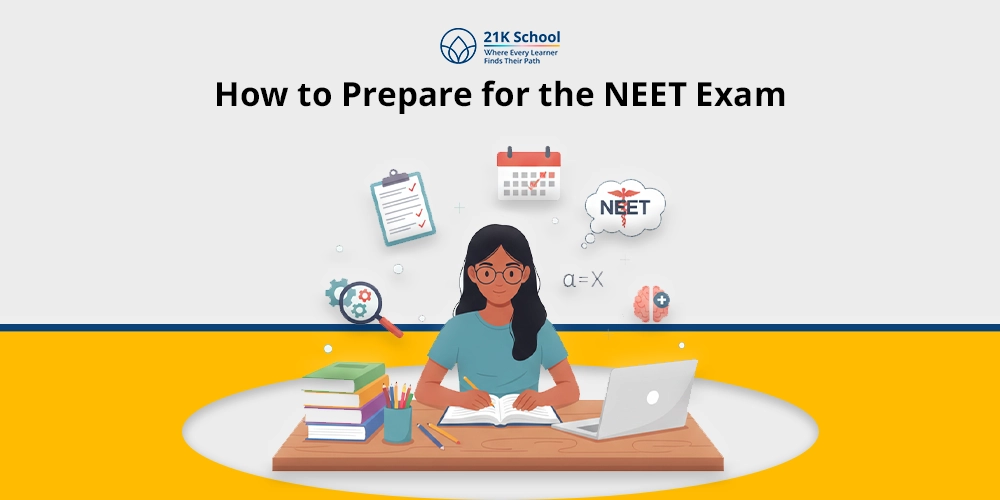
Feelings of loneliness and anxiety are common among children and young adults in today’s digitally charged times.
Factors such as too much access to social media, messaging apps, and online games have been blamed for these emotions. In today’s times, children need greater alignment with their goals to live a fulfilling life free of distractions and anxieties.
Exposure to mindfulness in the classroom can be transformative for children and teens.
Several studies indicate that inculcating mindfulness at a young age positively affects psychological health. It raises self-esteem, empathy, a sense of autonomy, competence, and vitality.
This blog explores practical exercises to help build the foundation of mindfulness in children.
Contents
What is Mindfulness?
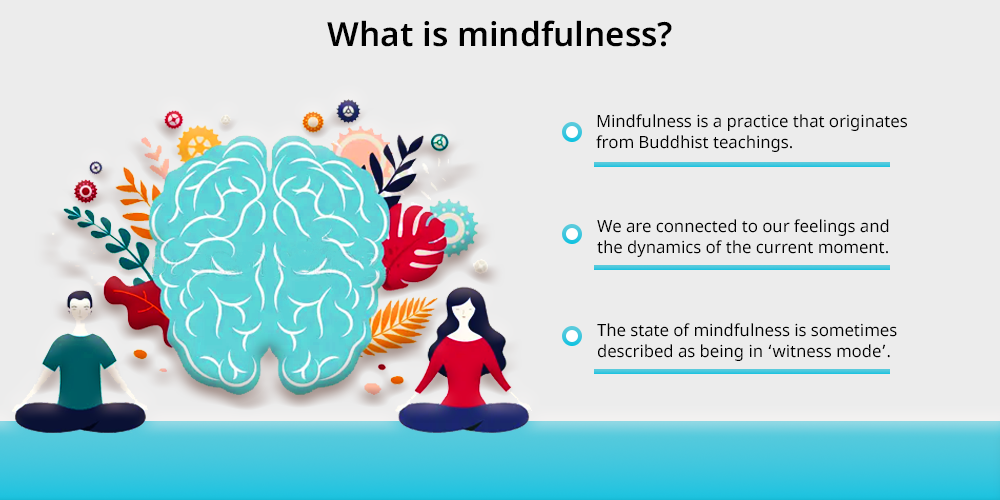
Mindfulness is a practice that originates from Buddhist teachings.
It is a state of being where we intentionally bring our attention to the present moment and are completely aware of our surroundings. We are connected to our feelings and the dynamics of the current moment.
The state of mindfulness is sometimes described as being in ‘witness mode’, where we respond to events as an observer instead of reacting with a lot of emotions.
Spiritual leaders such as Thich Nhat Hanh have advocated the concept of mindfulness for years and have written several books on it. Today, many skill development programmes are imparting the technique of mindfulness meditation.
Why is Mindfulness in the Classroom Important?
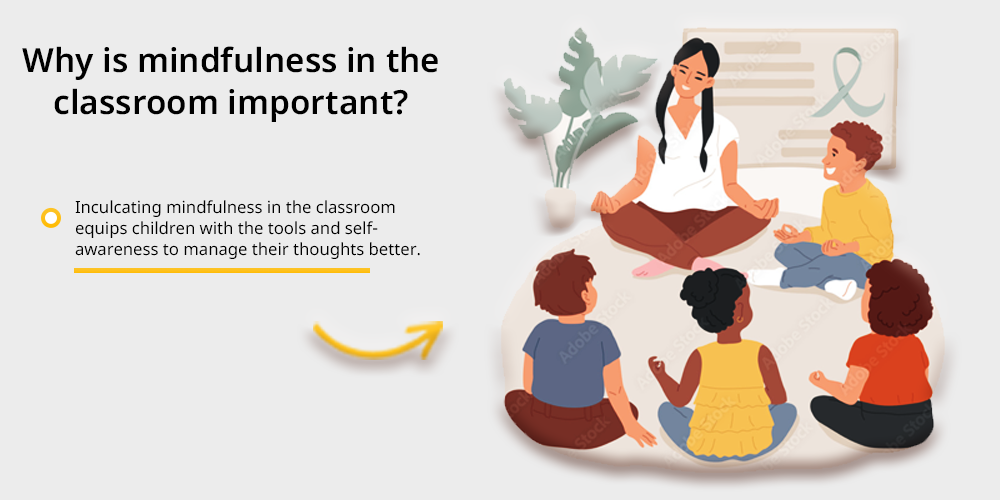
Inculcating mindfulness in the classroom equips children with the tools and self-awareness to manage their thoughts better.
Through these exercises, they will learn how to connect with their emotions better and build healthy relationships with their peers, family, and friends.
11 Mindfulness Activities for the Classroom
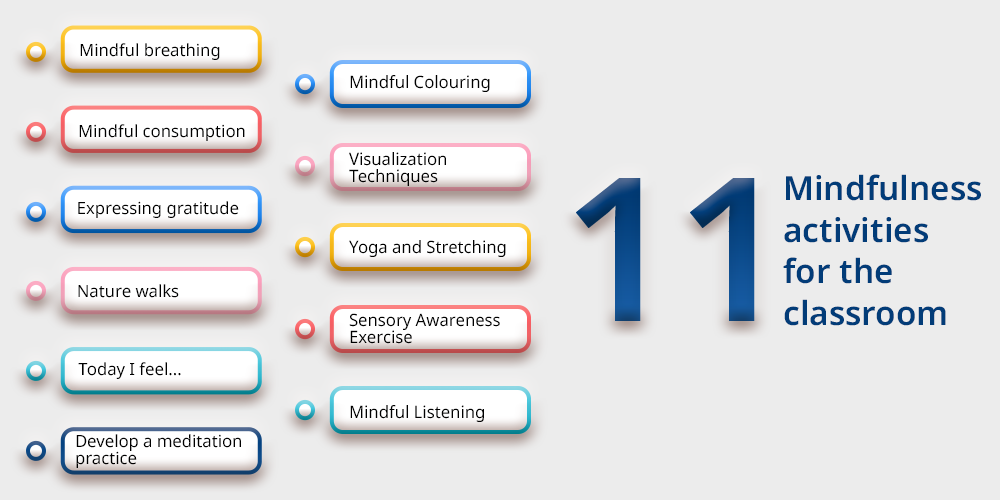
Mindfulness techniques can help children and young adults become more productive.
Here are 11 classroom mindfulness activities that easily tie into students’ daily or weekly schedules:
1. Mindful Breathing
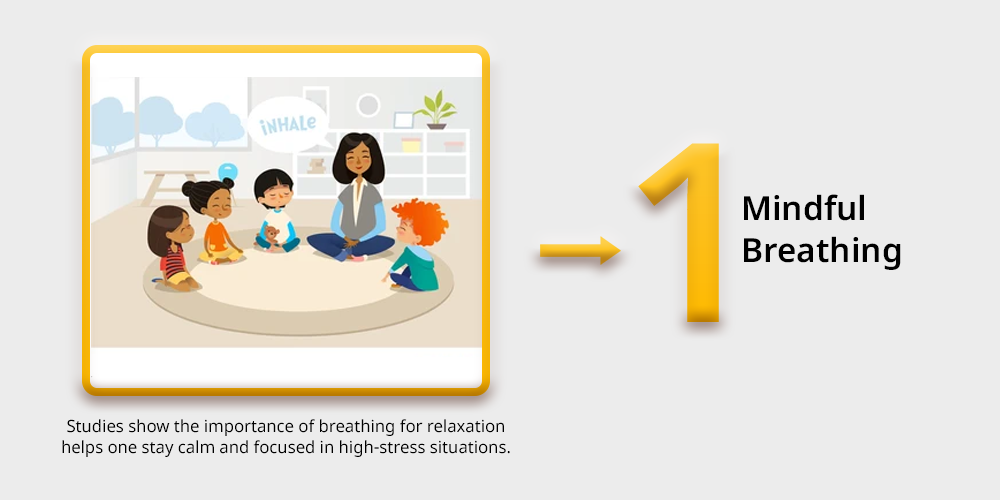
Studies show the importance of breathing for relaxation helps one stay calm and focused in high-stress situations. For instance, deep breathing through the belly has multiple benefits, such as building immunity and stabilising blood pressure.
Teaching children the basics of pranayam (a component of yoga that involves regulating the breath) will enable them to develop a superior breathing technique from childhood.
2. Mindful Consumption
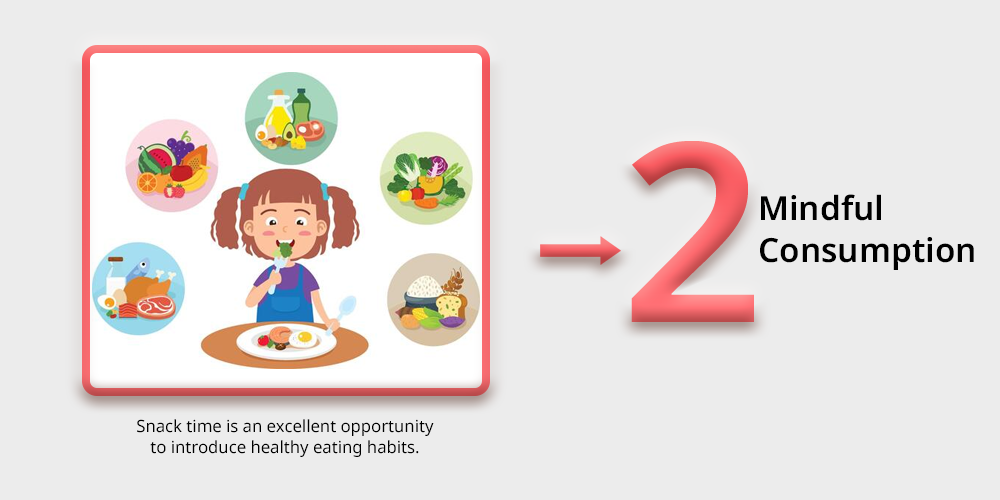
In fast-paced routines, a hurried lunch or snack is not uncommon. But this practice can lead to health issues like obesity and stomach ailments.
Snack time is an excellent opportunity to introduce healthy eating habits. Teach children the importance of chewing food mindfully, showing gratitude for the food and the creator of the food, and turning meal times into a community exercise.
3. Expressing Gratitude
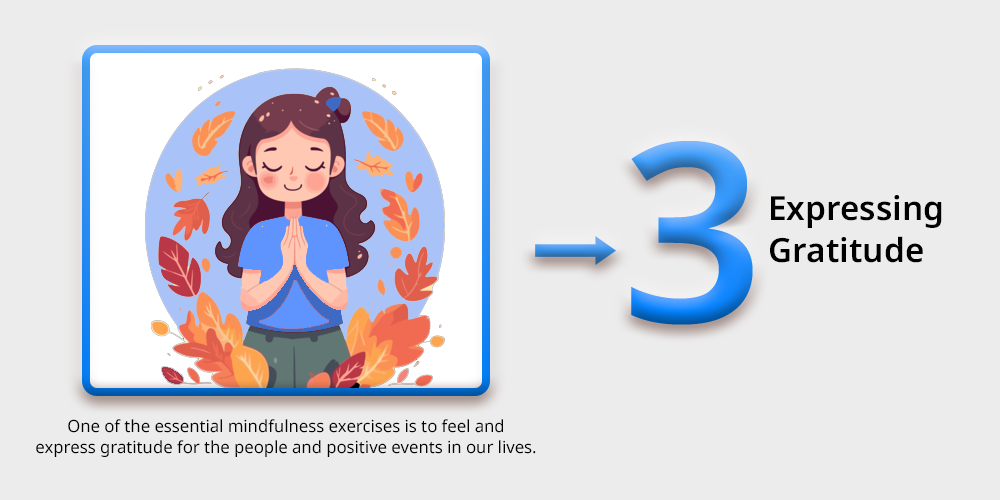
One of the essential mindfulness exercises is to feel and express gratitude for the people and positive events in our lives. It can be in the form of a physical or digital journal.
Children can be encouraged to keep a gratitude journal and record what they feel gratitude for every day. They can also be encouraged to voice their appreciation in front of their classmates.
Research indicates that gratitude journalling can result in better mental health and improved sleep within 12 weeks.
4. Nature Walks
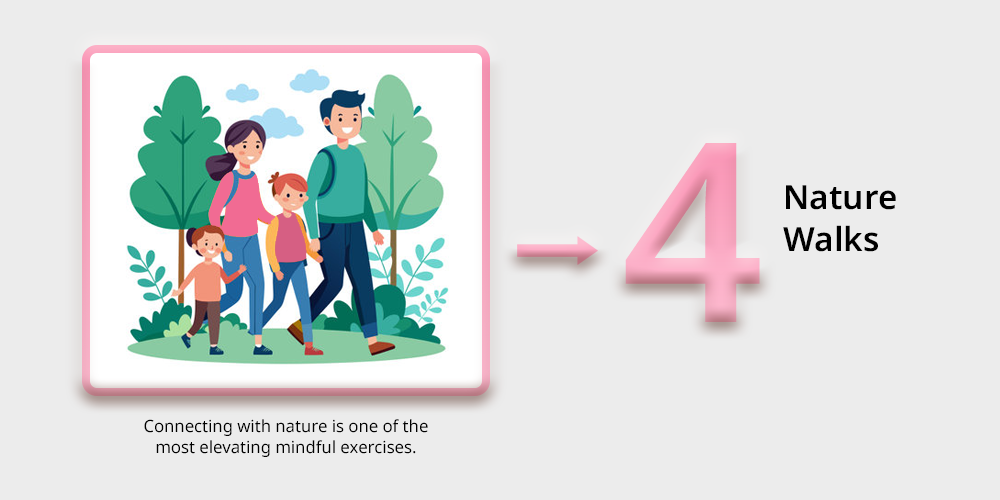
Connecting with nature is one of the most elevating mindful exercises. While it is not a classroom exercise, it makes for a great homework experiment.
Children can be encouraged to visit a park or garden nearby and observe the trees, birds, and other fauna.
Encourage them to put down digital devices during their nature walk and share their experiences in the classroom as a written or oral mindfulness exercise.
5. Today I Feel…
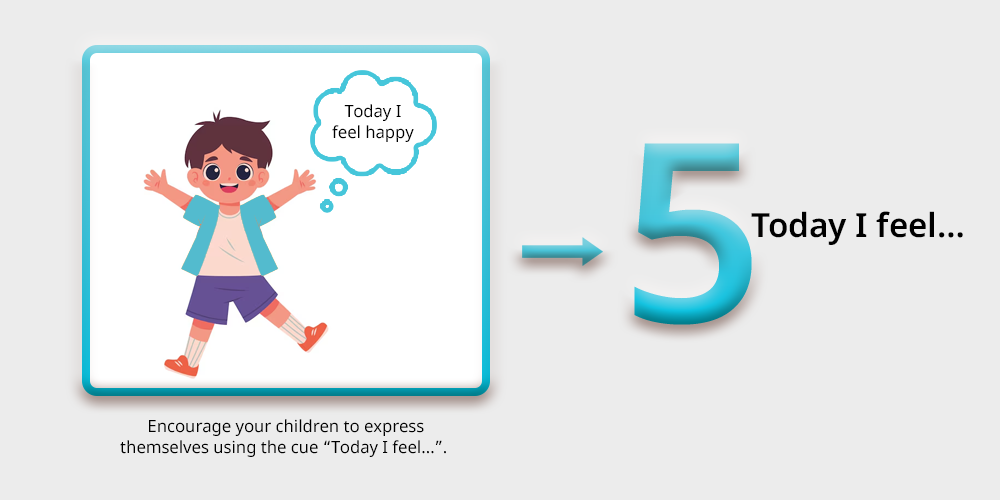
Some adults often find it challenging to identify what they feel: anger, love, resentment, irritation, or self-pity. Encouraging children to be mindful of their feelings at an early age paves the way for healthier engagement with emotions in adulthood.
Encourage your children to express themselves using the cue “Today I feel…”. They can do this in writing or say it out loud. As their vocabulary increases, they can express more complex emotions.
6. Develop a Meditation Practice
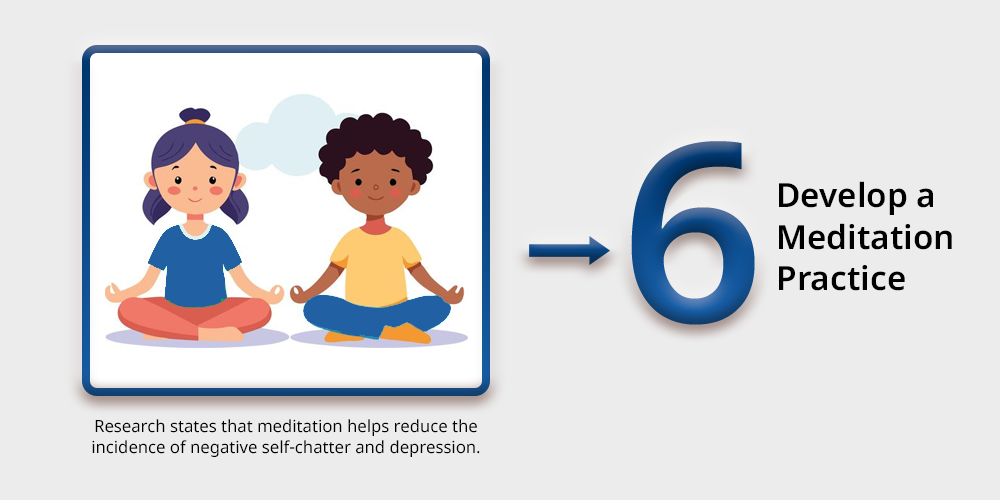
Research states that meditation helps reduce the incidence of negative self-chatter and depression. In addition, learning meditation techniques during childhood helps build a daily meditation practice and, hence, sound mental health .
For instance, children can be taught the Tibetan singing bowl meditation, which is known to positively impact mood, reduce tension and improve well-being.
Meditating for even five minutes daily can transform an individual’s psychological health. A daily meditation session in school can be an excellent way to foster mindfulness in the classroom.
Classroom mindfulness activities can easily prepare children to face the challenges ahead of them, whether in higher education or competitive workplaces.
These activities help children to focus, regulate their emotions and develop problem-solving abilities. Practising mindfulness can help students achieve qualifications via online schooling .
7. Mindful Colouring:
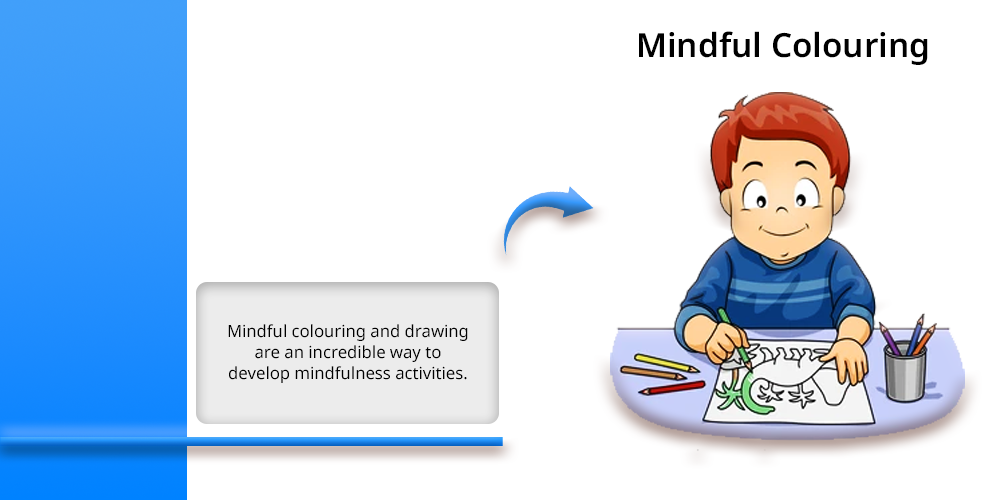
Mindful colouring and drawing are an incredible way to develop mindfulness activities. These allow kids as well as adults to enhance their imagination through fun in learning initiative.
This allows us to concentrate on the feelings of sensations and movements and mind.
8. Visualization Techniques:
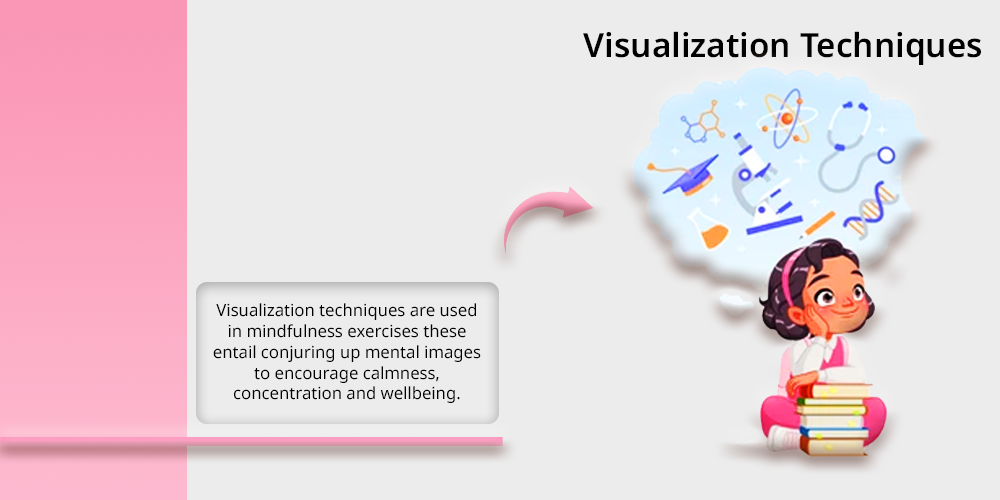
Visualization techniques are used in mindfulness exercises these entail conjuring up mental images to encourage calmness, concentration and wellbeing.
This is not only limited to children but adults as well, through this they can feel relaxation, reduce stress, and anxiety and prepare for future opportunities.
9. Yoga and Stretching:
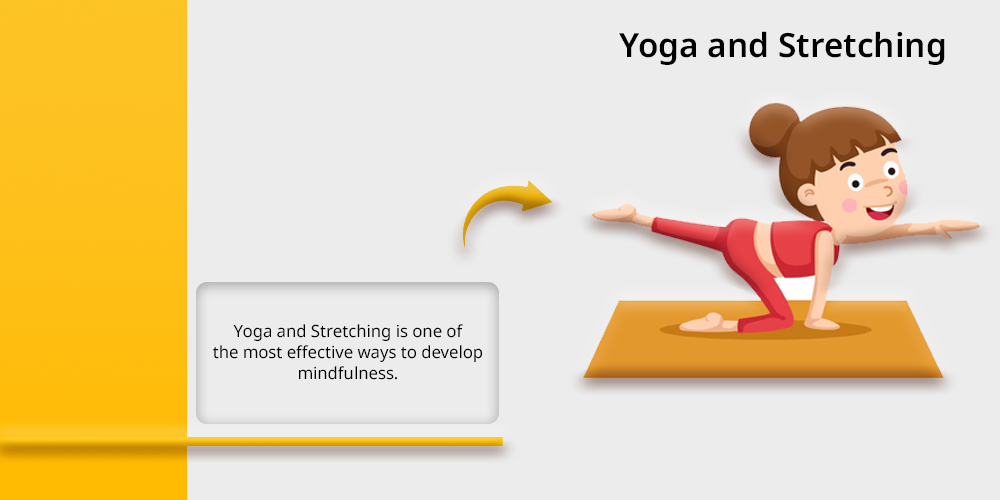
Yoga and Stretching is one of the most effective ways to develop mindfulness. Yoga and stretching help in developing a healthy mind and body.
One of the effective benefits of mindfulness yoga and stretching is it reduces stress, helps in better concentration, heightened self-awareness and develops a closer bond with oneself.
10. Sensory Awareness Exercise:
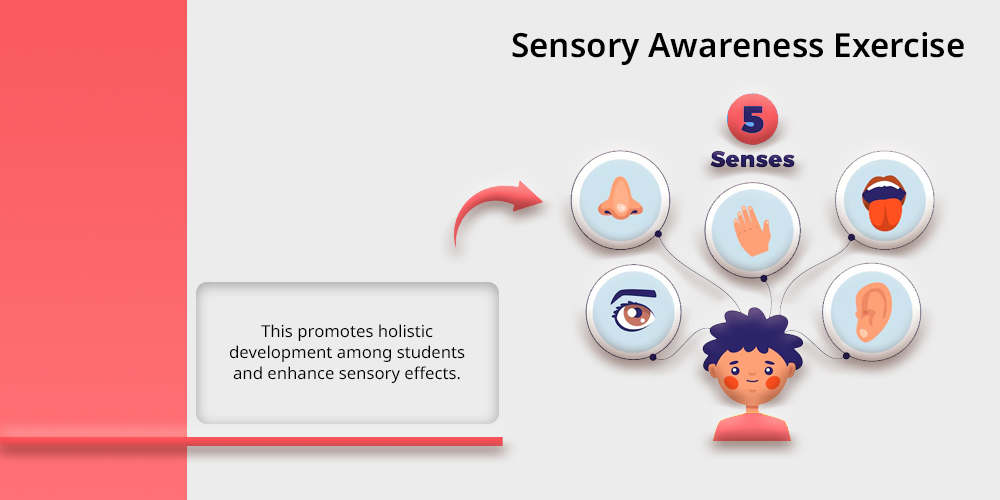
This is one of the effective ways of developing mindfulness activities among children.
To develop present-moment awareness, sensory awareness mindfulness exercises, entail concentrating on and appreciating the senses. This promotes holistic development among students and enhance sensory effects.
11. Mindful Listening:
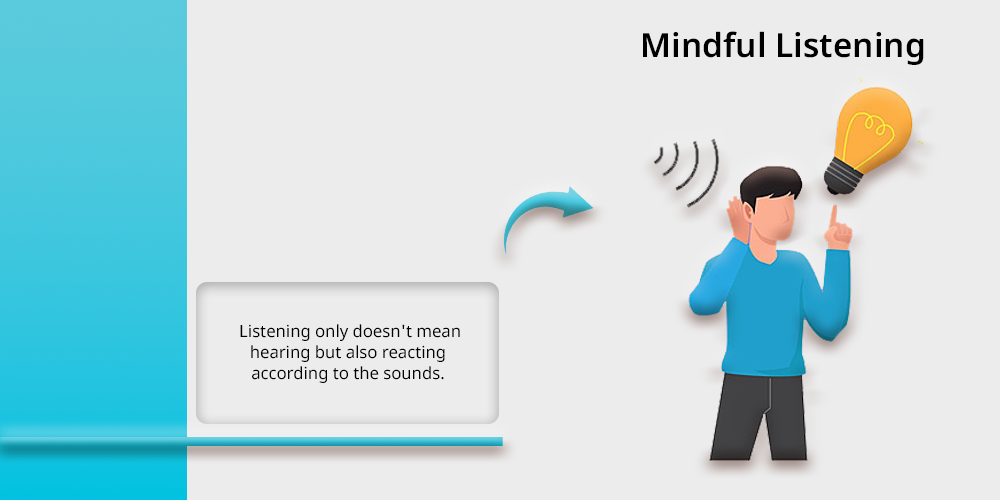
Mindful listening is all about attentiveness. Listening only doesn’t mean hearing but also reacting according to the sounds. For mindfulness listening it is necessary to be attentive and fully present your mind without any distraction.
To promote mindfulness activities one can do meditation, conversation, listening music, talk on the telephone, and play games.
Benefits of Practising Mindfulness in Schools
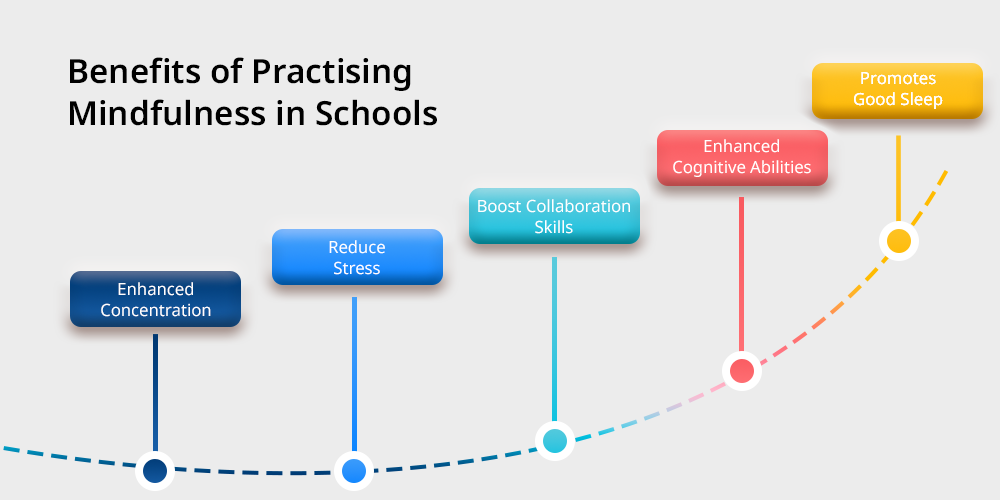
Promoting mindfulness in schools has numerous benefits that allow kids and teachers to develop positive attitudes.Through mindfulness exercises students engage in fun learning activities at homes.
Mindfulness activities are known for promoting academic performance, boosting memory power, reducing stress and anxiety, removing the cause of depression, enhancing collaborative learning and so on.
This creates a positive learning environment for kids and develops their future career perspectives. Here is why the benefits of practising mindfulness in schools are necessary.
1. Enhanced Concentration:
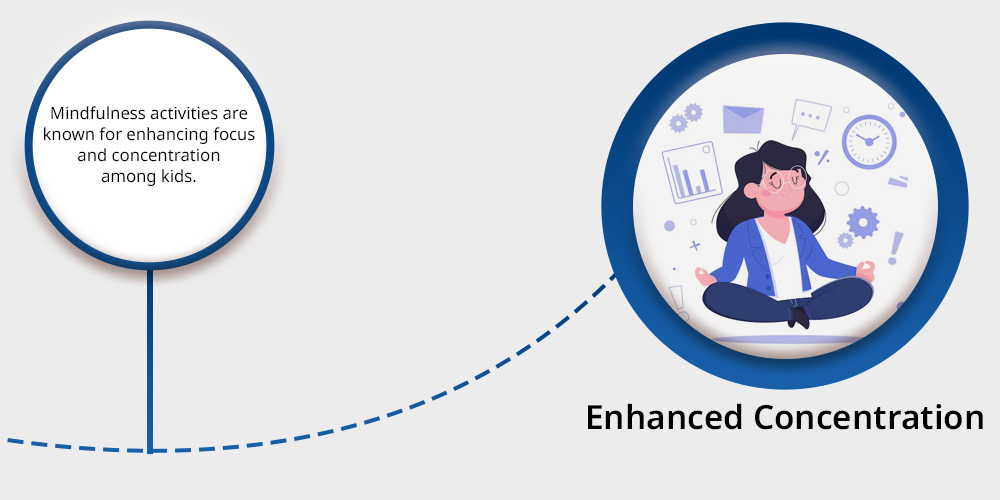
Mindfulness activities are known for enhancing focus and concentration among kids.
Through mindfulness exercises, kids can enhance their focus and stay concentrated for a longer period of time. This allows children to take workloads and efficiency in their projects.
2. Reduce Stress:
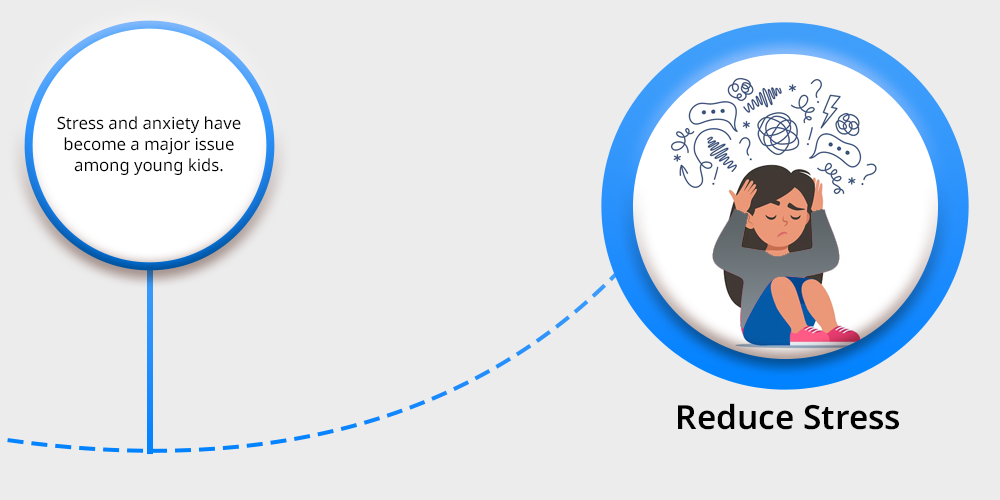
Stress and anxiety have become a major issue among young kids.
Students can effectively manage stress and anxiety by learning mindfulness which teaches them to pay attention to their current scenario and observe their thoughts and feelings without any judgment.
3. Boost Collaboration Skills:
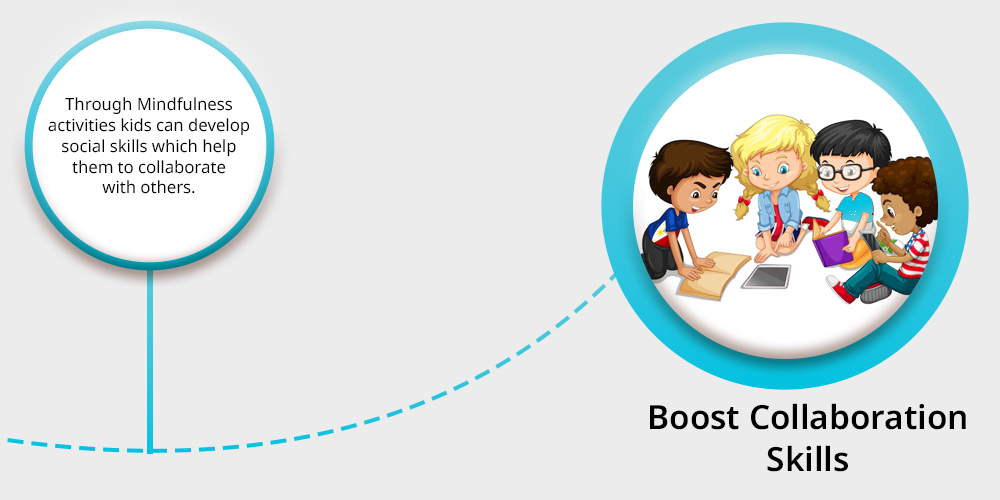
Through Mindfulness activities kids can develop social skills which help them to collaborate with others.
Students who are mindful are better able to interact and communicate with others which builds relationships and social skills. Collaborative skills help them in making career connections.
4. Enhanced Cognitive Abilities:
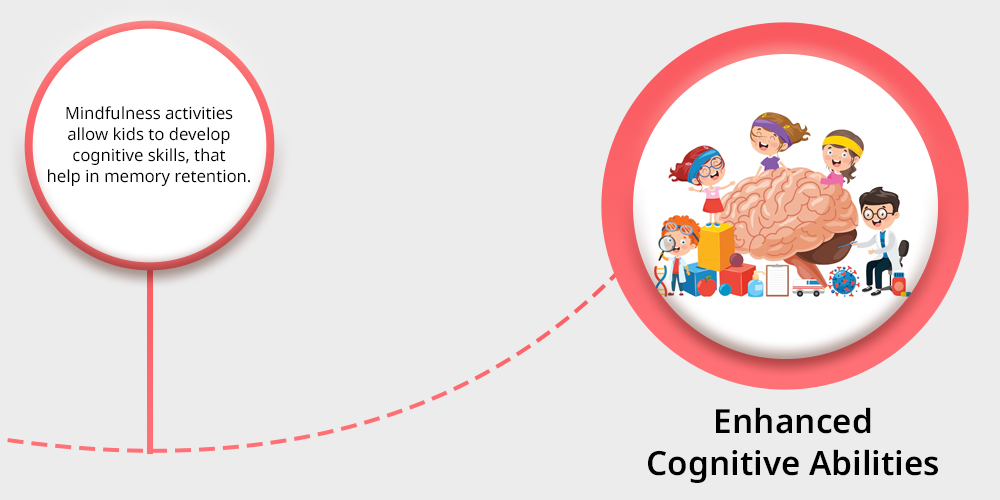
Cognitive skills are directly connected to mental abilities. Mindfulness activities allow kids to develop cognitive skills, that help in memory retention.
Which allows one to stay focused and helps balance the coordination between mind and movement. This makes me more prone to develop an interest towards a particular subject and develop analytical thinking as well.
5. Promotes Good Sleep:
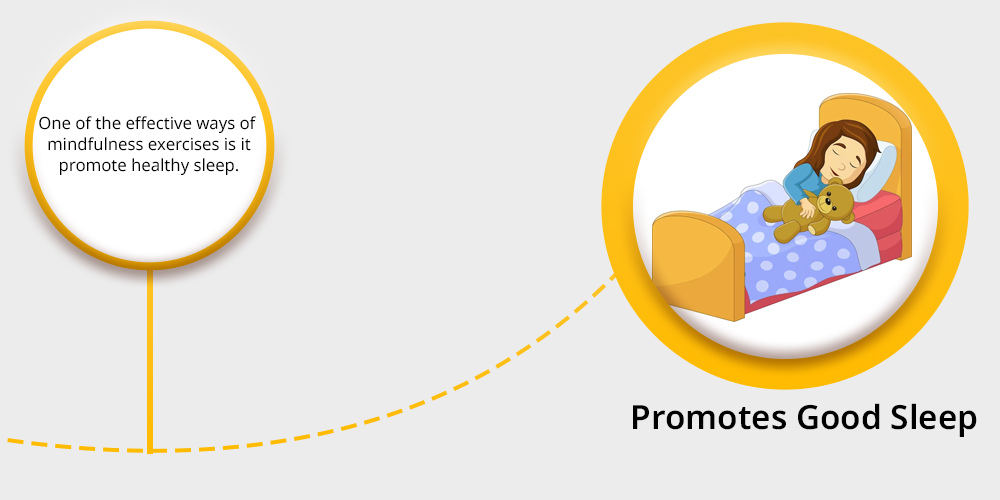
One of the effective ways of mindfulness exercises is it promote healthy sleep.
As mindfulness activities are known for reducing stress which makes the body relax and helps in releasing dopamine which helps to build a good sleeping habits among students.
Challenges and Tips for Implementing Mindfulness Activities
Mindfulness activities have lots of benefits to provide quality educational and holistic development among students. However, there are various challenges that create hindrances to implementing mindfulness activities.
However, it is possible to implement mindfulness exercises with the correct strategy and tips.
Challenges for Implementing Mindfulness Activities
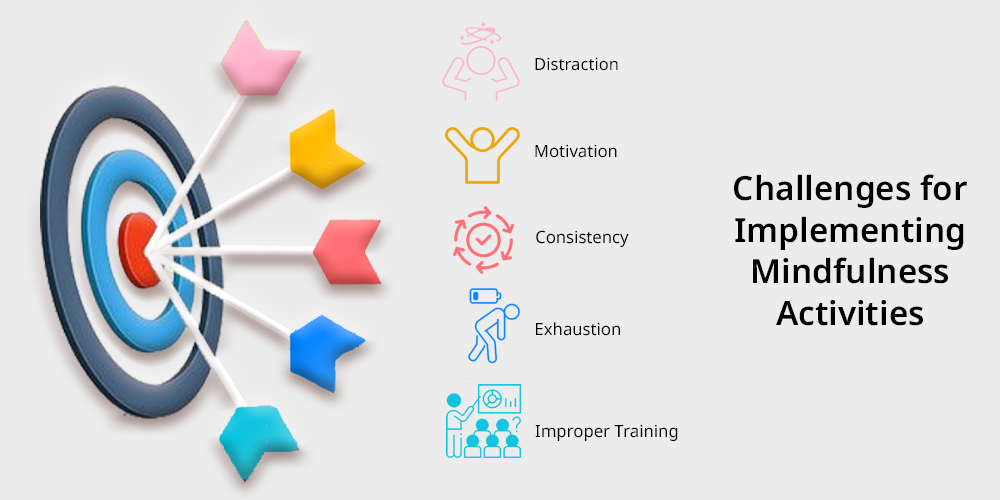
- Distraction: Distraction is one of the major challenges for implementing mindfulness exercises. It is necessary to always choose a silent place. For young children distractions can be annoying. So it is essential to find a peaceful spot to meditate and enhance mindfulness activities.
- Motivation: Various kids and even adults find it difficult to stay motivated to promote mindfulness activities. Lack of motivation causes children to hindered the mindfulness activities. It is essential to bring some changes through doing new exercises and develop interest towards exercises.
- Consistency: Consistency is one of the major challenges in achieving full goals. Many persons lack consistency in their life and in such scenarios, it can be difficult to keep up a consistent mindfulness practice particularly when life gets hectic.
- Exhaustion: Mindfulness activities require lots of energy and concentration. Because mindfulness activities demand a certain amount of energy to focus and pay attention. Due to this various individuals are not interested in practicing it when they are tired.
- Improper Training: The majority of individuals don’t have any proper idea about mindfulness exercises. Due to this, they don’t get enough understanding of these activities. Even various teachers and instructors don’t have proper training in mindfulness practice. Teachers with little training might not have the necessary abilities to lead others safely and efficiently.
Tips for Implementing Mindfulness Activities
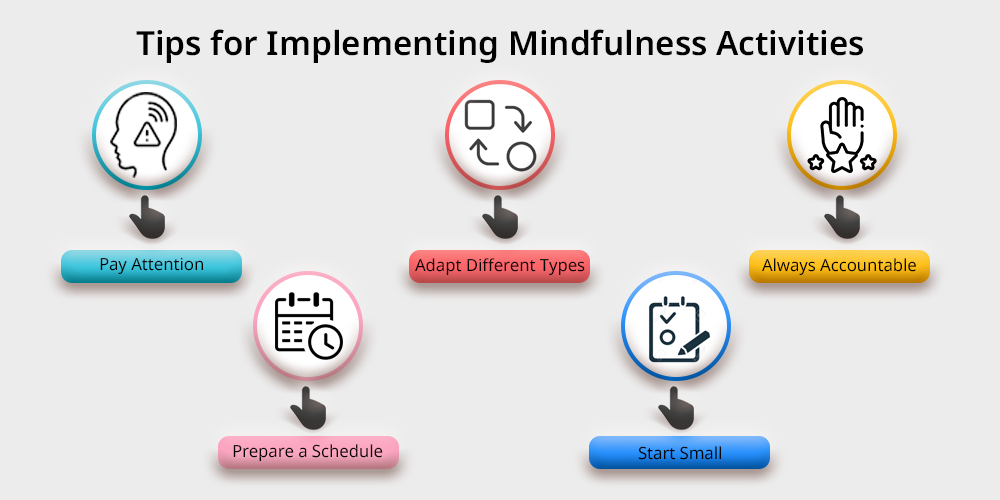
- Pay Attention: Understanding small things is necessary for implementing mindfulness, start observation and build a habit as you get more at ease and gradually extend your mindfulness exercises. This allows them to be more consistent and helps in focusing on new activities.
- Adapt Different Types: It is essential to implement mindfulness exercises through various activities. Explore different methods of mindfulness practices that allow you to adapt them.
Activities such as Yoga, Meditation, Art, Exercise and so on. Will help to take over the mindfulness. There are various activities that encourage curiosity in childrens. - Always Accountable: Accountability is very much essential in implementing mindfulness activities. It is ideal to talk to a family member or friend about the experiences with mindfulness. Through this more knowledge can be gained and supported by talking about the struggles and experiences.
- Prepare a Schedule: Preparing a schedule will help to practice the mindfulness activities within appropriate minutes. By following a perfect time for mindfulness activities. The body will adapt the routine according to the time habits.
- Start Small: It is essential to start the beginning with small tasks. Try not to spend an hour meditating on the first day. Start by doing mindfulness exercises for a short while every day. By regular practice, you can increase the duration as you feel more at ease.
Conclusion
By creating a positive learning environment and improving general wellbeing implementing mindfulness exercises in schools has several advantages for both teachers and students.
Practices like yoga mindful coloring visualization exercises sensory awareness exercises and mindful listening can help people become more focused, less stressed, and have better cognitive abilities.
However, obstacles like insufficient training, lack of motivation, and distractions can make it difficult to apply these practices effectively.
Teachers and students can successfully incorporate mindfulness into their daily routines by implementing tactics like beginning small staying accountable and investigating different mindfulness techniques. This will ultimately support holistic development and a better future.


